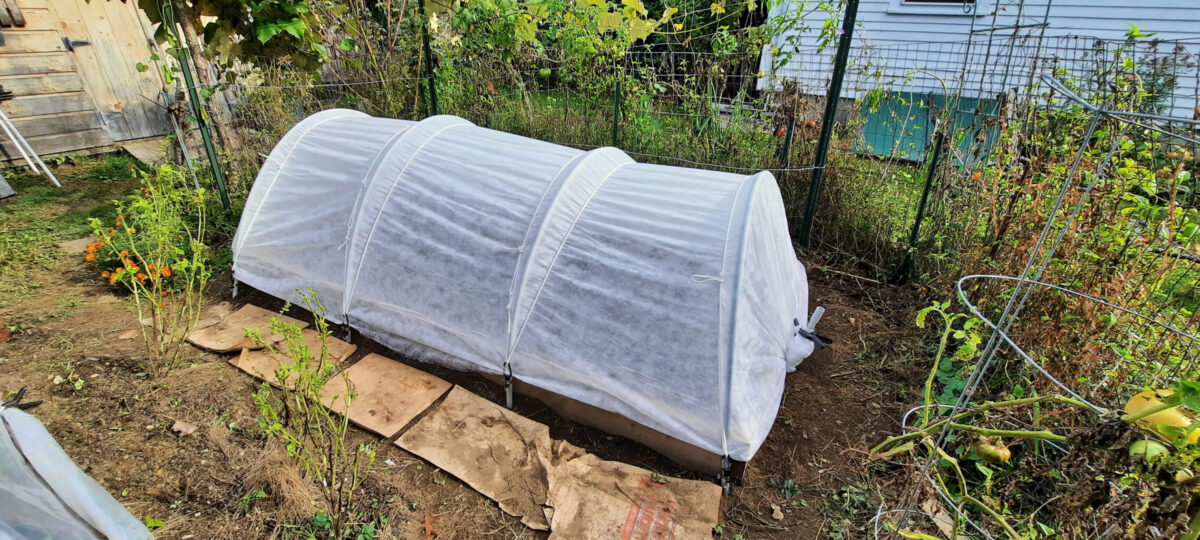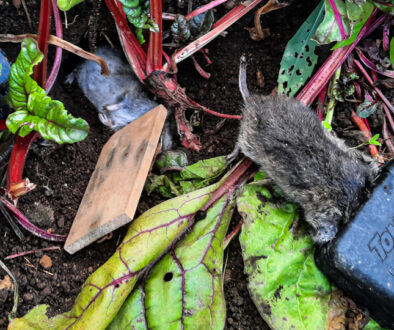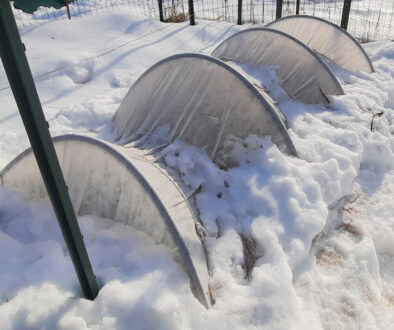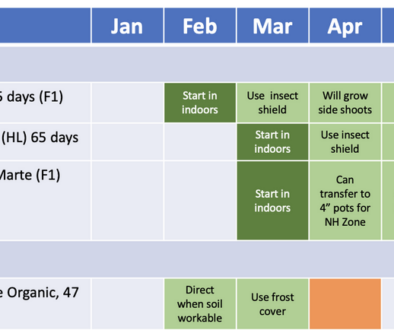Floating Row Cover
Succession planting for maximum food production
Here in New England, the autumnal equinox is a time to pay attention. Preparing for the eventual demise of the outside garden really begins mid-summer.
August-September
As soon as the summer crops are harvested start a fall crop in the same row. Cool-weather crops should be planted at the end of August up until mid-September.
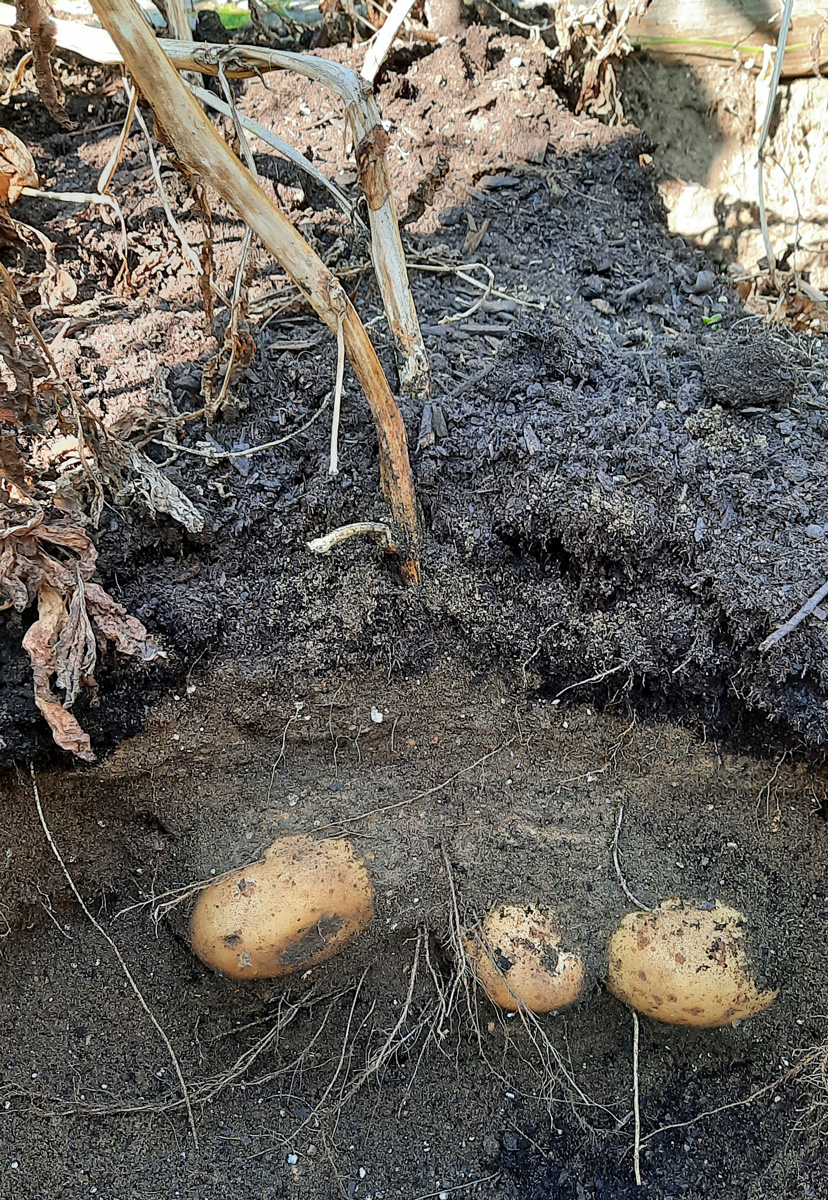
Potatoes
Potatoes can be dug as soon as the flowers appear for small potatoes, or after the plants die back for larger potaotes. To store potatoes brush most of the dirt off but do not wash. Leaving some dirt on the potatoes will help preserve them. They should not be exposed to light else they turn green. The green on the potato is solanine. Consuming solanine in large quantities can be harmful. The green part of the potato can be peeled or cut out and the rest of the potato may be eaten. Store the potatoes in burlap bags or cloth and keep them in a cool dry place out of light.
Once the potatoes are harvested from the row, plant a cool-weather crop such as kale, carrots, beets, turnips, Swiss chard, spinach, or others. The rows can be amended before planting with compost, or in the case of root crops such as carrots or beets work in a little phosphorus in the way of bone meal or superphosphate. If the soil is acid add lime.
Keep some potatoes for seed and plant next spring. I take the tiniest potatoes and leave them in a dish on a shelf, and use those. Some people say to use larger potatoes.
Brocolli
I grow broccoli all year, though considered a cool-weather crop. I use a shade cloth during the hottest months. Brocolli can have a first, second, and third cutting. We leave the broccoli, as well as the stems of the Brussels sprouts, in the field to feed the deer in the winter. I put in a double row of broccoli and pull one of the rows to plant carrots in its place.
September-October
Winter squash
I have minimized the types of winter squash I grow to butternut, small pie pumpkins, and large field pumpkins. Obviously, pick the pumpkins when they turn orange. The Butternuts are ready when they get a white dust-like coat, or, can not be pierced with a fingernail. Winter squash needs to be dried slightly before storing. They can be stored on wire shelves in a cool place or left in the sun for a day or two. They can be left outside on a porch up until there is a freeze. Do not let winter squash freeze. Store them in a cool dry place. Butternut can last up to six months if stored properly. I store them in wooden crates or bushel baskets. I use the damaged fruit first. Compost the old plants.
Tomatoes
At the NH garden, the tomatoes are long gone. The plants can be cut at the soil line, leaving the roots for the microbes. If the plants have disease do not put them in the compost, otherwise compost.
In Massachusetts, there are still many green tomatoes. This is when to watch the temperatures closely. You will need to remove all the remaining green tomatoes before the freeze. Bring them indoors and store them on a window sill or countertop to ripen, or fetch your favorite fried green tomato recipe.
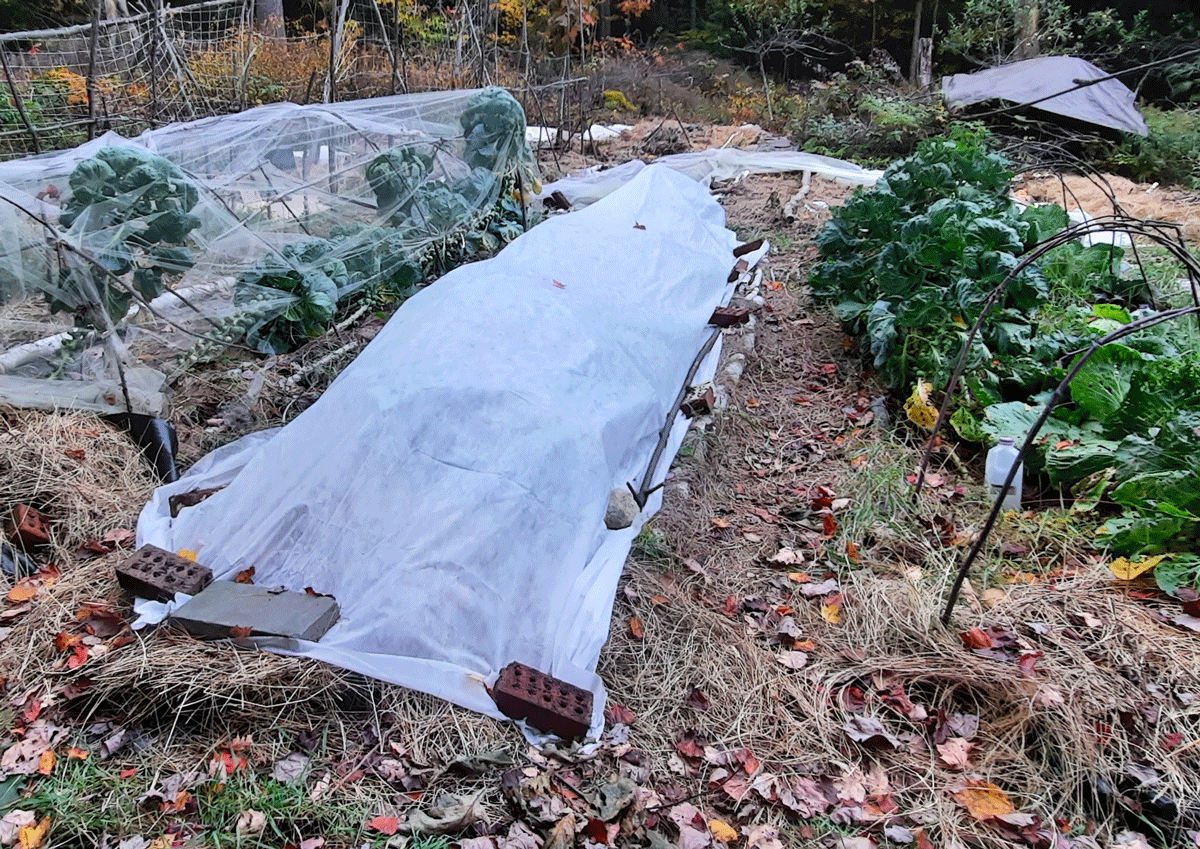
Row covers
Floating row covers can be installed over crops to extend the season. I cover the newly planted carrots and third-cut broccoli (which are in the row next to the broccoli). I want to save the broccoli for the deer. The cabbage and Brussels can be covered as well, but it seems those crops will withstand a frost or two without much damage.
I also put a floating row cover over the beets I planted after the harvested potatoes.
In Massachusettes, I installed a hoop-style row cover over a raised bed in which potatoes were harvested and now have a row of carrots, scallions, and spinach) I was late getting the succession crop in. Looking back it should have been planted no later than September 1, however, I’m hoping not to get a killing frost till the end of November.
Preparing for next season
Any beds that are cleared and have exposed soil should be covered over the winter. covering the beds promotes beneficial nutrients and microbes sustaining a living soil. Leaving the soil uncovered will create a “dead” soil depleted of nutrients.
To cover the soil you can spread compost and cover with a mulch of leaves, straw, or hay. Another way to cover the soil is with a cover crop of clover, buckwheat, or turnips. Cover crops can be turned over in the spring to enrich the row.
No-Till
I’m still leaning. Currently, I’ve been interested in the no-till method of gardening. This is where a sheet of cardboard is placed over the ground covered with a few inches of compost. When it’s time to plant a small hole is made and the seedling is inserted, as opposed to tilling the whole row. In established rows, a broadfork is used to aerate the ground before planting. However, there is debate whether or not using a broadfork constitutes a no-till garden.
I chose to cover two beds with paper covered with compost and salt marsh hay. I’m planning to plant seedlings into this bed without turning it over next spring.
